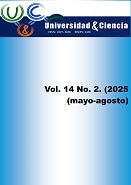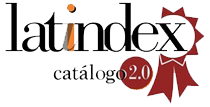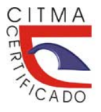Chemical elements in the dry mass of Pistia stratiotes L., Ciego de Avila, Cuba
DOI:
https://doi.org/10.5281/zenodo.16887744Keywords:
heavy metals, macronutrients, micronutrients, mixed substrate, organic fertilizerAbstract
Introduction: Pistia stratiotes L. is an invasive aquatic plant. In Cuba, it is used like ornamental plant. However, it is used in other regions for composting, as it improves crop growth and provides environmental benefits. Objective: to determine the concentration of chemical elements in the dry mass of the invasive aquatic plant P. stratiotes to support its possible use as organic fertilizer or mixed substrate in small-scale crops. Method: for the analysis of most of the chemical elements, both in the water of the Vista Alegre lagoon and in the dry mass of P. stratiotes, inductively coupled plasma optical emission spectrometry was used. The bioconcentration and translocation factors were determined. Results: the elements with the highest concentration in the lagoon water were Na, Ca, K. The highest bioconcentration values in the dry mass of P. stratiotes were S, P and K. In the leaves of P. stratiotes, the elements with the highest concentration was: Ca>K>N and in the roots; N>Ca>Na. The concentration of heavy metals is below the maximum permissible limits established for organic fertilizers and crop substrates. The elements with the highest translocation factor were B, Ca, K, Pb, Sr and Zn. Conclusion: P. stratiotes has demonstrated phytoremediation potential. The dry mass of P. stratiotes, from the Vista Alegre lagoon, contains macronutrients and micronutrients, so it can be used as organic fertilizer or mixed substrate for small-scale crops.
Downloads
References
Ali, H., Khan, E. y Sajad, M. A. (2013). Phytoremediation of heavy metals-concepts and applications. Chemosphere, 91, 869-881. https://doi.org/10.1016/j.chemosphere.2013.01.075
Bello, A. O., Tawabini, B. S., Khalil, A. B., Boland, C. R. y Saleh, T. A. (2018). Phytoremediation of cadmium-, lead-and nickel-contaminated water by Phragmites australis in hydroponic systems. Ecological engineering,120, 126-133. https://doi.org/10.1016/j.ecoleng.2018.05.035
Dhaliwal, G., Gupta, N., Kukal S. y Meetpal-Singh. (2014). Standardization of automated Vario EL III CHNS analyzer for total carbon and nitrogen determination in plants. Communications in Soil Science and Plant Analysis, 45(10),1316-1324. https://doi.org/10.1080/00103624.2013.875197
Dissanayaka, D. M. N. S., Udumann, S. S., Dissanayake, D. K. R. P. L., Nuwarapaksha T. D. y Atapattu A. J. (2023). January. Review on Aquatic Weeds as Potential Source for Compost Production to Meet Sustainable Plant Nutrient Management Needs. In Waste, 1(1), 264-280. https://doi.org/10.3390/waste1010017
González, S. G. M. (2009). La colección de plantas acuáticas del Jardín Botánico Nacional de Cuba. Revista del Jardín Botánico Nacional, 30, 15-20.
Henry Silva, G. G., Camargo, A. F. y Pezzato, M. M. (2008). Growth of free-floating aquatic macrophytes in different concentrations of nutrients. Hydrobiologia, 610,153-160. https://doi.org/10.1007/s10750-008-9430-0
Hernández Fernández, L., Méndez, I. E., Vázquez, J. G., de Zayas, R. G. y Feijoo, J. C. L. (2023). Aquatic plants in the freshwater artificial lagoons in Ciego de Avila, Cuba. Intropica, 18, 37-49. https://doi.og/10.21676/23897864.4753
Honmura, T. (2000). Studies on the ecology and the utilization of water hyacinth (Eichhornia crassipes (Mart.) Solms.). The United Grad. Sc. Agric. Sci. Kagoshima Univ. PhD thesis., 1-151.
Jacobs, S. W. y Pickard, J. (1981). Plants of New South Wales: a census of the cycads, conifers and angiosperms. National Herbarium of New South Wales Royal Botanic Gardens, 120 pp.
Latimer, J. G. (2015). The Basics of Fertilizer Calculations for Greenhouse Crops. VCE Publ., 430 pp.
Lestari, M. W., Sholihah, A. y Sugianto, A. (2022). Pistia stratiotes utilization to improve the straw compost quality. Journal of Ecological Engineering, 23(9), 78-87. https://doi.org/10.12911/22998993/151764
Lu, Q., He, Z. L., Graetz, D. A., Stoffella, P. J. y Yang, X. (2011). Uptake and distribution of metals by water lettuce (Pistia stratiotes L.). Environmental Science and Pollution Research, 18(6), 978-986. https://doi.org/10.1007/s11356-011-0453-0
Maine, M. A., Suñé, N. L. y Lagger, S. C. (2004). Chromium bioaccumulation: comparison of the capacity of two floating aquatic macrophytes. Water Research, 38(6), 1494-1501. https://doi.org/10.1016/j.watres.2003.12.025
Mufarrege, M. M., Hadad, H. R. y Maine, M. A. (2010). Response of Pistia stratiotes to heavy metals (Cr, Ni, and Zn) and phosphorous. Archives of environmental contamination and toxicology, 58, 53-61.
Muñiz Ugarte, O. M. (2022). Contenido de metales pesados como criterio de calidad de suelos. Revista Ingeniería Agrícola, 12(3), 4-9.
Muthusaravanan, S., Sivarajasekar, N., Vivek, J. S., Vasudha Priyadharshini, S., Paramasivan, T., Dhakal, N. y Naushad, M. (2020). Research updates on heavy metal phytoremediation: enhancements, efficient post-harvesting strategies and economic opportunities. Green Materials for Wastewater Treatment, 191-222. https://doi.og/10.1007/978-3-030-17724-9_9
Muthusaravanan, S., Sivarajasekar, N., Vivek, J. S., Paramasivan, T., Naushad, M., Prakashmaran, J. V. y Al-Duaij, O. K. (2018). Phytoremediation of heavy metals: mechanisms, methods and enhancements. Environmental Chemistry Letters, 16, 1339-1359. https://doi.og/10.1007/s10311-018-0762-3
Oviedo, R. y González Oliva, L. (2015). Lista nacional de plantas invasoras y potencialmente invasoras en la República de Cuba–2015. Bissea, 9, 1-88.
Prabawardani, S., Taberima, S., Fatoni, S., Mawikere, N.L., Fenetiruma, O.A. y Lyons, G. (2024). The use of Pistia stratiotes compost as an ameliorant for chili growth and yields in the reclamation fresh tailing area of Timika, Papua. Journal of Degraded & Mining Lands Management, 11(2), 5329-5338. https://doi.og/10.15243/jdmlm.2024.112.5329
Prieto Méndez, J., Ramírez, C. A. G., Gutiérrez, A. D. R. y García, F. P. (2009). Contaminación y fitotoxicidad en plantas por metales pesados provenientes de suelos y agua. Tropical and Subtropical Agroecosystems, 10(1), 29-44.
Rattanawong, Y., Kungskulniti, N., Charoenca, N., Benjawan, L. y Englande, A. J. (2022). Water Lettuce (Pistia stratiotes L.) as Base Material for Composting. Environment Asia, 15(1), 70-80. https://doi.og/10.14456/ea.2022.7
Regulación UE. 2019/1009. (2019). Del Parlamento Europeo y del Consejo de 5 de junio de 2019. 114 pp.
Rodríguez Alfaro, M., Muñiz Ugarte, O., Araújo do Nascimento, C. W., Montero-Álvarez, A., Calero Martín, B. y Martínez Rodríguez, F. (2022). Rangos permisibles de Cadmio y Plomo en abonos orgánicos utilizados en la producción de alimentos. Cultivos Tropicales, 43(1), 12 pp.
Ružičková, J., Lehotská, B., Takáčová, A. y Semerád, M. (2019). Morphometry of alien species Pistia stratiotes L. in natural conditions of the Slovak Republic. Biologia, 75(1), 1-10. https://doi.og/10.2478/s11756-019-00345-5
Trisilawati, O., Rizal, M. y Pribadi, E. (2020). Organic cultivation of medicinal crops in the efforts to support the sustainable availability of jamu raw materials. Conference Series: Earth and Environmental Science, 77 pp. https://doi.og/10.1088/1755-1315/418/1/012077
Wamba, O., Taffouo, V., Youmbi, E., Ngwene, B. y Amougou, A. (2012). Effects of organic and inorganic nutrient sources on the growth, total chlorophyll and yield of three bambara groundnut landraces in the coastal region of Cameroon. Journal of Agronomy, 11(2), 31-42.
Yadav, K. K., Gupta, N., Kumar, A., Reece, L. M., Singh, N., Rezania, S. y Khan, S. A. (2018). Mechanistic understanding and holistic approach of phytoremediation: A review on application and future prospects. Ecological Engineering, 120, 274-298. https://doi.og/10.1016/j.ecoleng.2018.05.039
Yesmeen, R., Zakir, H., Alam, M. y Mallick, S. (2018). Heavy metal and major ionic contamination level in effluents, surface and groundwater of an urban industrialised city: A case study of Rangpur city, Bangladesh. Asian Journal of Chemical Sciences, 5(1), 1-16. https://doi.og/10.9734/AJOCS/2018/45061
Downloads
Published
How to Cite
Issue
Section
License
Copyright (c) 2025 Universidad & ciencia

This work is licensed under a Creative Commons Attribution-NonCommercial-ShareAlike 4.0 International License.





















